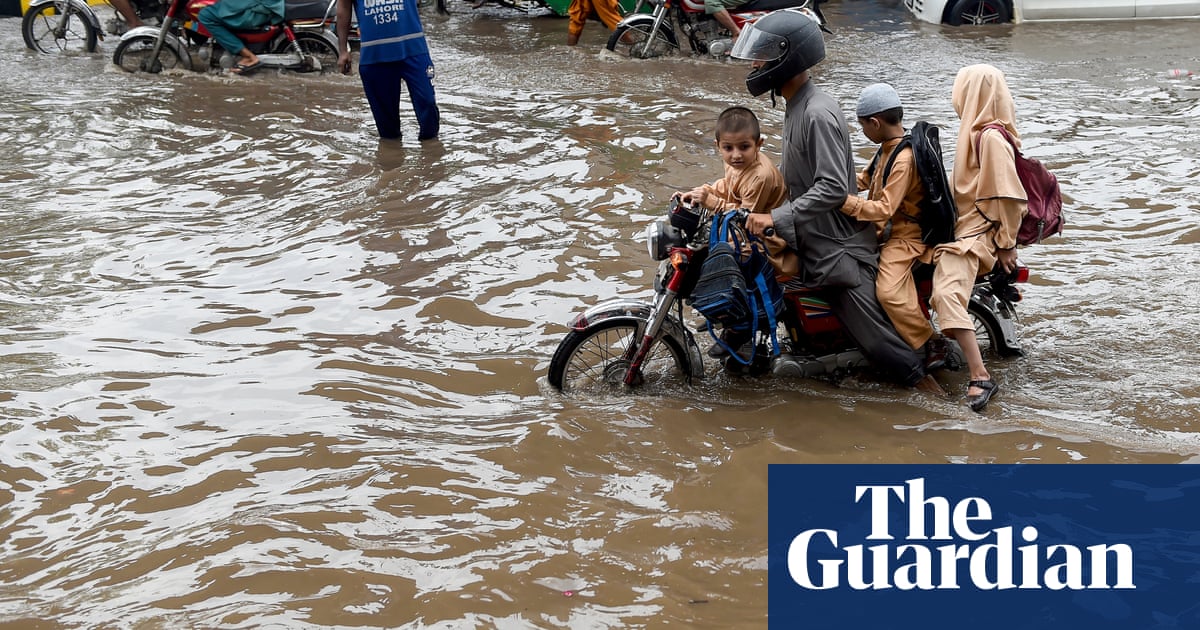PROTECT YOUR DNA WITH QUANTUM TECHNOLOGY
Orgo-Life the new way to the future Advertising by AdpathwayApologies for this late update, but at least it will give me the opportunity to give my opinion/analysis of how this melting season has evolved, now that the minimum is just around the corner.
It also gives me the opportunity to announce that the Arctic Sea Ice Forum recently passed the 100 million pageview mark. This year already has the most pageviews since the ASIF's inception in 2013, and this month - only halfway through - already attracted more pageviews than any other month so far. My gratitude goes out to everyone who contributes with images, animations, analysis, speculation and heaps and heaps of information, all of them needed to help people become conscious of the severity of the situation human civilisation is in.
On to 1 billion pageviews!
-----
Another month has passed and so here is the updated Arctic sea ice volume graph as calculated by the Pan-Arctic Ice Ocean Modeling and Assimilation System (PIOMAS) at the Polar Science Center:
Despite a massive amount of melting momentum and an advantageous thickness distribution, volume loss during August 2019 was below average (2301 vs 2559 km3 for the 2007-2018 period). Of course, being record low makes it harder to melt a lot of ice, but since 2007, only two years - 2013 and 2017 - managed to lose less volume than 2019 during August. This means that this year is no longer lowest on record, with 2012 breezing past and going 238 km3 lower. 2016, though profiting from the most extreme August weather conditions in the era of the New Abnormal, is still 521 km3 behind.
Here's how the differences with previous years have evolved from last month:
Wipneus' version of the PIOMAS graph shows that this year is the only one capable of staying somewhat close to 2012:
The anomaly trend line on the PIOMAS volume anomaly graph has shot up some more, and is now more firmly in the one standard deviation zone:
Because extent loss during August was even slower than volume loss, average thickness has also gone down some more, second only to 2010, which saw massive dispersal towards the end of the melting season, with huge swaths of open water near the pole (I wrote about that in a blog post called North Hole during my first year of blogging). When there's a lot of extent, the volume gets spread over a larger ice pack, and thus thickness goes down. Remember, PIJAMAS is an (imperfect) average thickness measure where I divide the PIOMAS volume numbers with JAXA sea ice extent numbers: The Polar Science Centre average thickness graph shows more or less the same, but with 2011 lower than this year as well:
Now, for my opinion/analysis. Last month, I wrote at the end of the PIOMAS update:
From what I've seen on the Arctic Sea Ice Forum, written by commenters I've known for years and highly respect, my gut feeling says this year won't be able to break the 2012 records.
But for weeks now, I've been thinking of those prophetic words uttered by Peter Wadhams, back in 2007: 'In the end, it will just melt away quite suddenly.' I don't think all of it will melt away quite suddenly in coming weeks, but maybe more than one would expect just looking at the data.
This year is a great test that will tell us a lot about the importance of melting momentum.
To be honest, I expected a clearer melting momentum signal during this final phase of the melting season. Melting momentum took off slower than years like 2012 and 2016, but when it did take off, it was fireworks (see June 2019, one hell of a month). David Schröder's melt pond fraction maps, the SMOS pixel chart, the compactness charts, the Albedo-Warming Potential graphs, the snow cover graphs, more and more they were pointing to a massive build-up of melting momentum. On top of that, PIOMAS was showing that this year was very competitive volume-wise, and for five months in a row, 2019 was in the top 3 when it came to temperature records (August coming in lowest on record):
graph courtesy of Zack Labe
It was clear that the spell of extremely sunny, warm weather was ending during August. That, to me, was the great test for my melting momentum theory. Weather conditions switched, but for a week or so extent loss was keeping up with 2012's pace, despite the boost provided by the GAC. But then halfway through the month, things slowed down to a crawl after all (see red trend line):So, what happened? Of course, there was a cyclone that was in a perfect position to disperse the ice, but there was so much weak ice that in my view, momentum should have gone on for a while longer.
There are two possibilities:
1) There wasn't as much melting momentum as I assumed.
2) Melting momentum is less important than I think it is.
As said, it took a while for melting momentum to get going. Timing is of the essence when it comes to breaking melting season records. May was actually very sunny this year, but most of the radiation coming from a Sun at a still low angle, got bounced off the pristine white ice. It may sound counterintuitive, but before the real melt ponding gets going due to open skies, cloudy weather is actually worse for the ice, because with clouds comes humidity and the clouds also block outgoing radiation. This can cause the snow on top of the ice to melt just a tiny bit, deforming the structure of the snow, making it more prone to melt when the sun starts to shine in earnest. 2019 came short in this respect, as evidenced by visual inspection of satellite images. Never mind the fact that the 2018/2019 freezing season was much less spectacular compared to the previous three winters, when it comes to temperatures and extreme weather conditions.
I'm still convinced that without a decent amount of melting momentum no records will be broken. That's why in years like 2016, 2017 and 2018 it was possible to announce at an early date that the 2012 record was safe. But conversely, a massive amount of melting momentum doesn't guarantee records either. Initial ice conditions and late stage weather obviously play important roles as well. And don't forget the invisible woolly mammoth in the room: Ocean heat flux.
Maybe I'm emphasizing melting momentum too much, but I still feel kind of vindicated by recent developments on the extent front. Over the last week, just a small amount of weather conducive to melting has helped nudge 2019 below the 2007 and 2016 minimums, with quite an impressive run of daily drops. Tomorrow or the day after, the 4 million km2 mark could even be breached. I always thought that this year would come in second whatever would happen, and it looks like it has:Either way, after almost 10 years of blogging, I'm now clearly seeing the contours of that first year when ice-free conditions will be reached (in other words, an ice cover smaller than 1 million km2, which amounts to ice-free for all practical purposes).
It is preceded by a freezing season similar to that of 2015/2016, starts with the melt onset 2012 saw, builds up the massive melting momentum of 2019, and ends with the crazy weather of 2016. It makes me shudder to think what the satellite images will look like then. It may take more time than most cryospheric scientists think it will take, but unfortunately, that's not much of a comfort.
The ingredients are there, AGW is the cook.





















 English (US) ·
English (US) ·  French (CA) ·
French (CA) ·